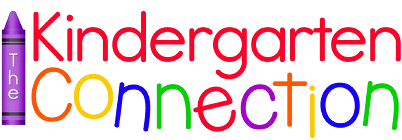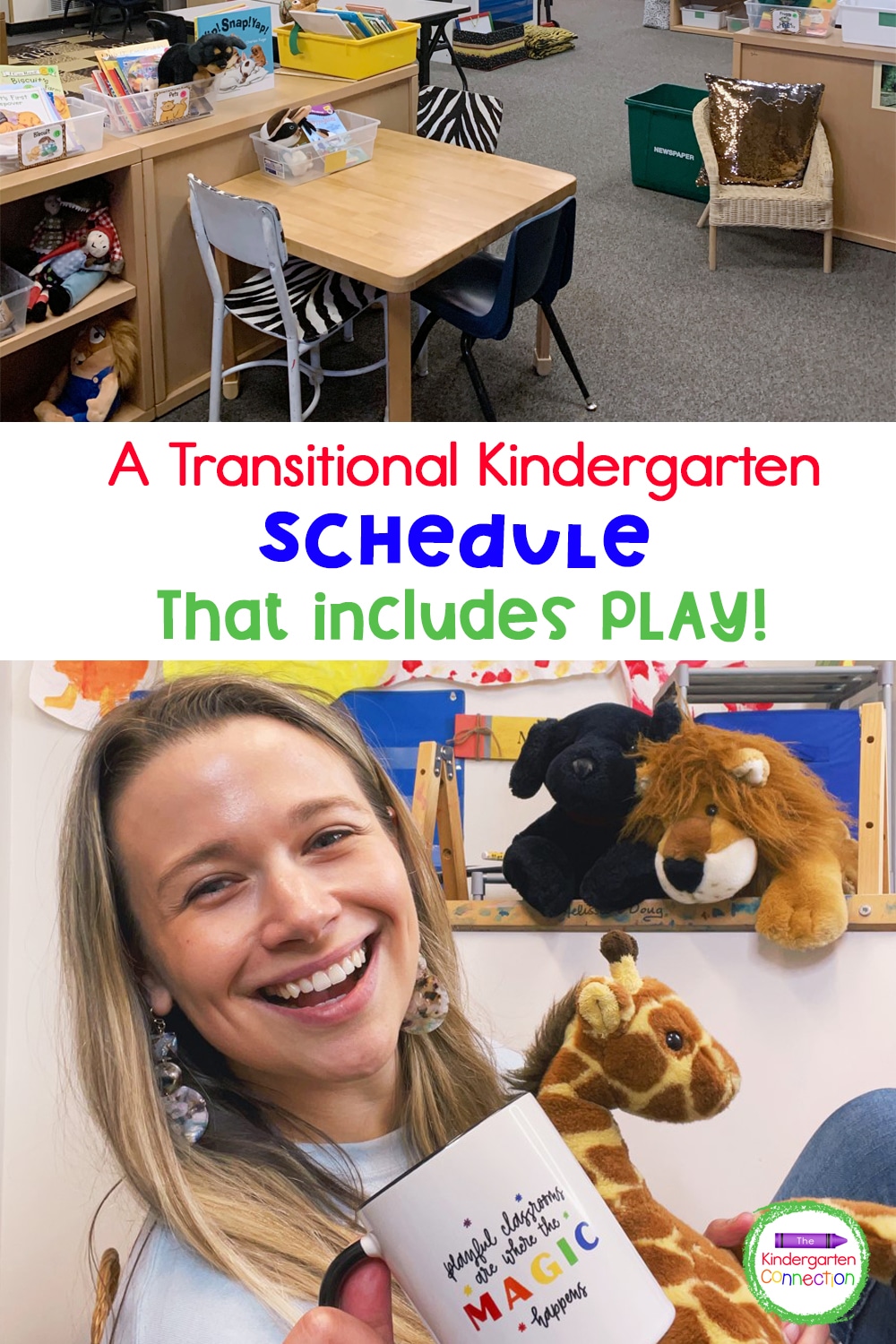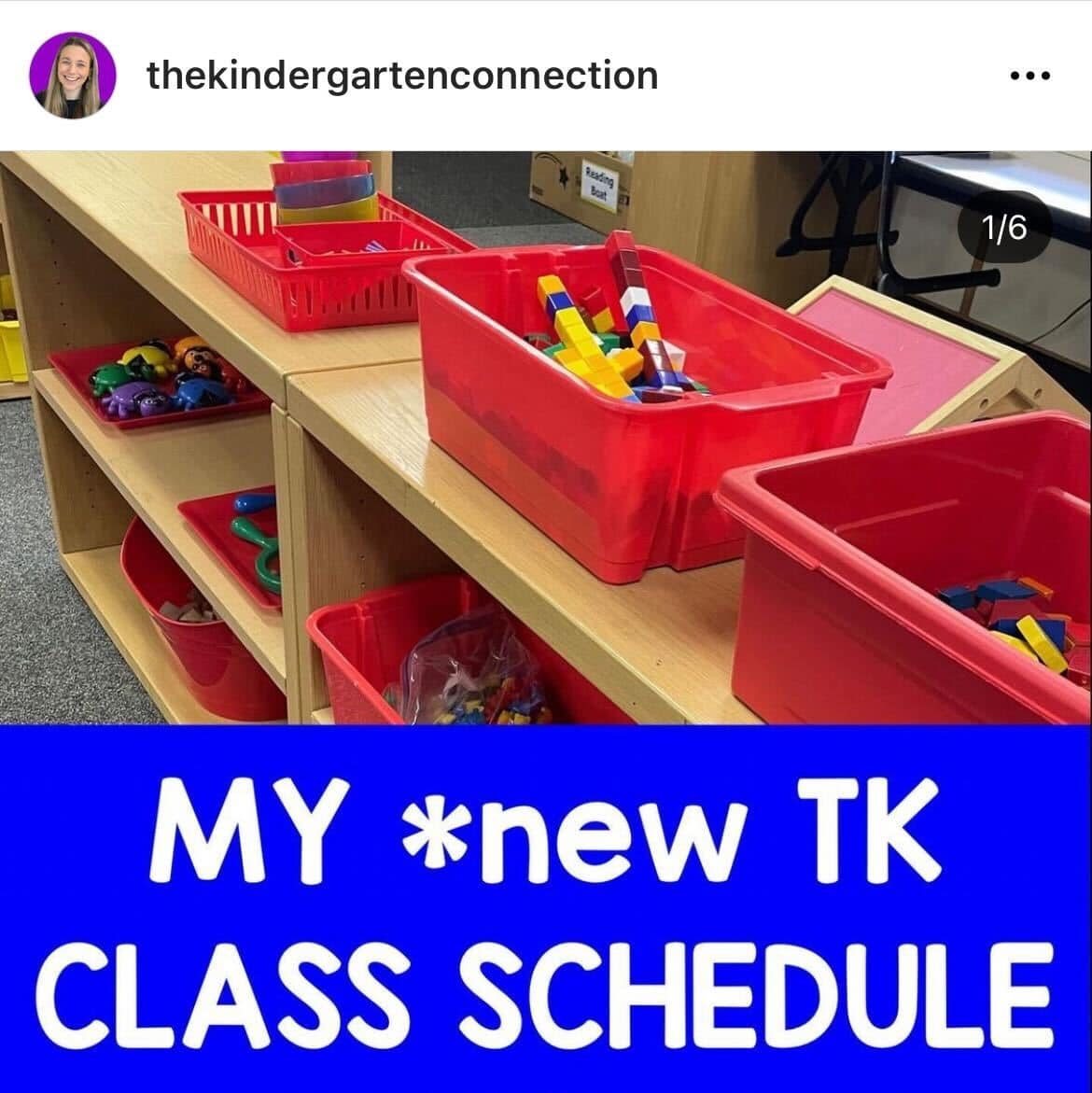A Look at a Full Day Transitional Kindergarten Schedule
This post contains affiliate links for your convenience. View our full disclosure policy here.
Often, when I say that I teach TK, I am asked, “What is that?” TK (short for Transitional Kindergarten) is early intervention Kindergarten. My students are mostly 4.5-5.5 years old. I have taught other grades as well, and in TK we follow very similar routines as we did for my Kindergarten schedule. Sticking to schedules and building routines is not always easy at first when you are working with small children but it is so worth it. Check out my daily Transitional Kindergarten schedule to take a peek at a “normal” day in a TK classroom (where we always make time for playful learning!).
*For even more support with planning for the WHOLE year, check out our
Pre-K Scope & Sequence and TK Scope & Sequence!
A Look at a Full Day Transitional Kindergarten Schedule
While schedules are important and necessary, it is not realistic to expect that they be followed exactly every day. This schedule does not take into account certain procedures or specials, etc. depending on the year, but it will give you a little look into or an idea of a “day in the life!”
*Science and Social Studies are not listed but are integrated into our math, literacy, and play!
Our Morning Routines:
8:45 – 9:15 Arrival, PLAY, Breakfast
Starting the morning with a solid arrival routine can set the tone for the entire day. We spend a lot of time at the beginning of the year practicing our routines and we begin with what students should do every morning as soon as they get to the classroom. Our morning routine includes time for playful learning! For a closer look, check out my favorite tips for morning arrival routines!
9:15 – 10:45 Literacy
Our literacy block focuses on mini lessons, writing time, and free-flowing centers. We practice our routines for free-flowing centers a lot. This means the kids are allowed to choose whichever activities they want to do (all centers are pre-selected by me so I know they are always strengthening important skills) and I am able to use this time to meet with small groups!
10:45 – 11:00 Recess
11:00 – 12:00 Math
During this time we focus on mini lessons, number talks, and free-flowing centers. We follow the same basic structure and routine as our literacy block.
Our Afternoon Routines:
12:00 – 12:45 Lunch/Recess
12:50 – 1:05 Quiet Time
While we do not nap in TK, we do take the time to calm down and rest. The school day can be long for young children and it is important to give them a moment to just take it easy and reset before we dive back in to learning.
1:05 – 1:15 Pack Up
It takes some time and a lot of practice to get our pack up time down to 10 minutes but we do get there! While everything may feel slow at the beginning of the year, it is only by taking our time and practicing routines that we are able to go quickly later in the year. Here are my tips for a calm and effective dismissal routine!
1:15 – 2:30 PLAY/Dismissal
Playful learning is the perfect way to wrap up our day. This is when students can engage with our puzzles, LEGOs, puppets, building blocks, or any of our dramatic play areas like our kitchen, etc.
During this time I am able to observe (and also join in on) the social-emotional learning that is happening such as sharing, problem solving, or adjusting when an area is too full or a toy is unavailable.
You may notice that the afternoon is purposefully lighter, but “lighter” does NOT mean easy!
Play is work. Play is necessary. And play is learning. You can simply see that I do not save 1:1 conferences or small groups for reading for 2 pm when their little brains are toast.
***UPDATE: I recently went to a bit longer of a school day. You can see a schedule option for a longer school day HERE on Instagram!
What is your Kindergarten or Transitional Kindergarten schedule like? I would love to know!
Want unlimited access to even MORE teacher support including a
full year of Scope & Sequence for Pre-K and TK?
Join us in the Print and Play Club and you will have instant access to:
- hundreds of printables
- every TKC resource
- video lessons
- a digital games vault
- Pre-K and TK Scope & Sequence
- a PLAYlist of fun songs AND activities
- professional development
- additional teacher resources…
Be sure to request an invitation so that you don’t miss your chance to be part of the best early childhood club around!
- Find It! Writing Centers for Pre-K & Kindergarten - March 29, 2024
- Spring Counting Activities for Pre-K & Kindergarten - March 22, 2024
- Teacher Tips for How to Deal with a Loud Classroom - March 19, 2024




Hi I love this transitional kindergarten. I would like to know more about it. How do you get involved or license for this? We have the NC Pre-Kindergarten in our facility. I believe my administrator may be interested in this.
Hi there,
More and more states are starting to implement TK programs in which case they will have their own requirements and regulations so we always recommend checking with your state. However, I can definitely give you more information about what TK is like where Alex lives in Washington State. It’s a half year program (January -June) although it is moving to full year in the upcoming school year. Students have to be entering kindergarten the following year, have zero preschool or educational experience, and qualify in at least one of the following areas; cognitive, social emotional, or adaptive. Hope this helps! 🙂
I am a 1st grade teacher considering earning the 24 credits required to teach TK in California. This schedule is very helpful. Thank you! What state do you teach in?
Hi there! This is Alex’s schedule for TK in Washington. We are so happy that it is helpful to you. Good luck with whichever direction you choose to go. Teachers are valuable and amazing at any grade. We’re so happy you are here with us! 🙂
During your block literacy and math times are the pre selected activities set on the tables for them to choose from? How many children do you. have at each center? How many centers are there to choose from? How long are they at the center? Is there somewhere where you explain a little more in depth what these block segments look like? I have always done group learning. We are also a play based learning but just have never done centers as a rotation, but feel I may need to do something different since I will be teaching TK.
You have such amazing advice. I ran across you today on instagram and was impressed by you.
Thank you
Hi there! How exciting that you are getting ready for your year in TK! I am happy that you found us on Instagram so that we can stay connected. Alex does not rotate her centers, but rather students “free-flow” through them. We do have a course that guides teachers through the step by step of this. Though it’s not open now, you may wish to hop on the waitlist at the link below.
https://thekindergartenconnection.lpages.co/play-course/
In the meantime, we will be opening up our exclusive membership, The Print and Play Club, on August 27th for the back to school season, so I highly recommend requesting an invite – you will love it! You can do that here: https://thekindergartenconnection.lpages.co/print-and-play-club-waitlist/
Inside the club we have various trainings, resources, and more, including an e-book on centers (which Alex is actually going to turn into a recording soon!). Let us know any questions you may have, and I hope you have the best start to your year!
I enjoyed reading your class schedule and comparing it to my class schedule. I agree with your quote “Play is work. Play is necessary. And play is learning.” I very strongly feel the same way.
Melissa,
Thanks so much for your feedback. We love hearing from fellow teachers that are passionate about the importance of play! 🙂